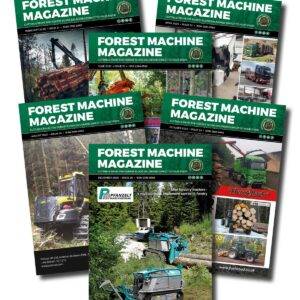New breeding populations of the eight-toothed spruce bark beetle (Ips typographus) have been discovered in Kent and East Sussex.
From:Department for Environment, Food & Rural Affairs, Forestry Commission, and Animal and Plant Health Agency
Woodland managers, land owners, the forest industry and tree nurseries are being urged to remain vigilant after several new breeding populations of the larger eight-toothed European spruce bark beetle (Ips typographus) were identified in Kent and East Sussex.
The UK Chief Plant Health Officer confirmed two breeding populations in two woodlands in Kent on 25 June and 1 July following routine Forestry Commission plant health surveillance activities. On 9 July, three further outbreaks were confirmed, also in Kent and East Sussex. Forestry Commission, Forest Research and the Animal and Plant Health Agency will continue surveillance in the local areas, and the Forestry Commission are overseeing the required eradication measures.
Following a finding of the beetle in woodland in Kent in 2018, a demarcated area, enforced by the Plant Health (Ips typographus) (England) Order 2019, remains in place covering parts of Kent and East Sussex. Within this area, additional movement restrictions apply on conifer material capable of spreading the pest. Given the recent findings, the boundary of this demarcated area will be extended to help prevent the accidental movement of this pest.
Nicola Spence, the UK Chief Plant Health Officer, said:
Several outbreaks of the eight-toothed spruce bark beetle in areas of woodland in Kent and East Sussex have been confirmed. This beetle poses no threat to human health, but can have a serious impact on spruce trees species and the forestry industry.
We are taking swift and robust action to limit the spread of the outbreaks as part of our well-established biosecurity protocol used for tree pests and diseases, and legislation is in place that restricts the movement of spruce trees in the area.
I encourage anyone who suspects a sighting of the bark beetle to report these to the Forestry Commission through the Tree Alert portal.
Enhanced plant health surveillance within the area this year has intercepted a number of bark beetles through the wider environment trapping network, most likely due to natural dispersal of the pest from the continent. As a result, the Forestry Commission and its partners are increasing their surveillance and management activity in the area during the next few weeks.
The beetle does not affect human health but can be a serious and destructive pest of the spruce tree species across Europe, although it generally prefers weakened or damaged trees.
Members of the public can read further information on tree pests and diseases, and how to identify them.
-
That’s a remarkable amount of work hours for a single machine, the Norcar 600 owned by Erkki Rinne is taken well care of, it even has the original Diesel engine.
-
Kieran Anders is a forestry contractor working in the lake district. His work involves hand cutting and extracting timber using a skidder and tractor-trailer forwarder.
-
It is not possible to eliminate chain shot, but there are simple steps that can be taken to reduce the risk.
-
Arwel takes great pride in the fact that the mill has no waste whatsoever, “the peelings are used for children’s playgrounds, gardens and for farm animals in barns in the winter and the sawdust has multiple uses in gardens and farms as well.
-
Timber hauliers need to encourage young blood in, and also look after the hauliers we have, we need make the sector a safe and positive place to work.
Find Us On
Forest Machine Magazine is written and edited by a forest professional with over 40 years hands on experience. We are dedicated to keeping you informed with all the latest news, views and reviews from our industry.
To support us you can subscribe to our bi-monthly magazine which is delivered to your door from only £30 per year.
Subscribe here
#homeoflogging #writtenbyloggersforloggers #loggingallovertheworld
-

 1 Year Subscription£0.00
1 Year Subscription£0.00 -

 Issue 29£6.00
Issue 29£6.00

